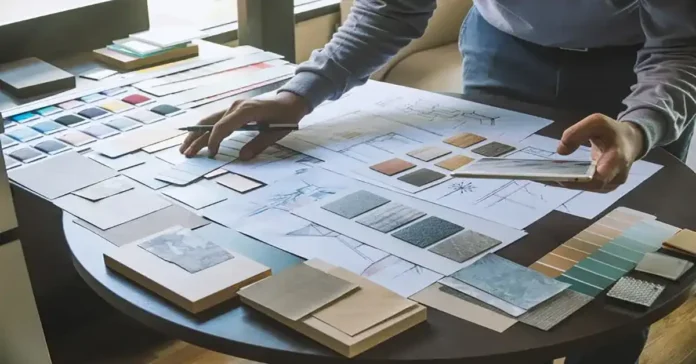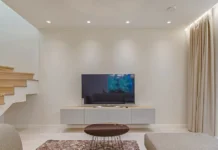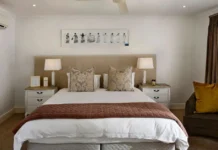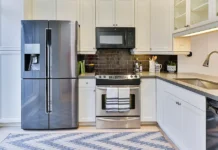How to Develop an Interior Design Budget
A well-developed interior design budget makes it simpler to plan and save costs during the renovation of or building your place. A budget allows you to set realistic expectations for how much money you can spend on each part of your project and provides you with a general idea of how much your project will cost to complete. Before starting a project, it’s important to create a budget for an interior design project that will guide the entire process.
Being realistic is essential if you want to develop a budget that works. You should be certain of what you desire before thinking about money. For instance, understanding the prices of interior design elements is essential since it may affect the size of the budget.
If you do not know where to start with budgeting, consider the following three step guide:
1. Create your design concept
Starting with your concept for the space, create a design budget. We invite you to gather motivational photos that exemplify what you want to see as part of our design process.
- Are we building a built-in wall?
- On your backsplash, are you considering traditional subway tile or a laser-cut mosaic?
- Do you envision crisp sunshades or layered drapes?
- Do you like maximalist or minimalistic styles or anything in between?
The number of accessories and furnishings might astonish you. All these considerations must be made for in the budget since they are crucial. The money you spend on furnishings will depend on your budget, but that does not mean you have to adhere to a certain design approach. The reality is that there are several methods for designing spaces. You may begin by creating a mood board out of a collage of images that motivate you. You might scribble some ideas on paper as an alternative. Once you know what you want, you can even use Adobe Photoshop or SketchUp to make your concepts come to life. This will help you save time and provide your designer with a clear idea of what you want.
A well-planned budget for an interior design project will help you make informed decisions and avoid overspending.
2. Start shopping
If you do not know exactly what you want, shopping takes time. Shop online, at Ikea, or even at the neighbourhood second-hand store. Make sure the items you purchase complement one another and work well together. Think about whether you would like to invest in quality or quantity when purchasing new products. Do you really need 10 seats, or only 3? Swap meets and flea markets are popular places to get cheap home décor items or sell unwanted furniture for additional money.
It might seem like a complete easy decision to move items from one area to another. However, you will be surprised at how many helpful things you may uncover in and around your house! When necessary, objects that can readily move from one room to another include vases, baskets, and boxes. So, if you think your décor needs a new item, have a look around your house to check whether you already have it. You will always shop for your own house and doing so will be made simpler in the future if you stick to a predetermined colour scheme. Consider the aspects of a photo that appeal to you while looking at, for instance, living room design ideas. An item or work of art identical to it may be in another room. If you have the same colours repeating throughout your home, you will be able to move things around very easily! While you walk around your home, also keep the next point in mind.
Once you have created a budget for an interior design project, it’s time to start shopping for materials and furnishings.
3. Keep it simple
Never exceed any budget, not even the one for improvements. Keep things straightforward; furniture is meant to be used every day. Decide on a theme and stick with it if you want to save money. Do not mix patterns, colours, shapes, or textures. You can always paint, stain, or upholster your furniture if you are feeling daring. Also, do not ignore storage. There are many several types of storage, including baskets, shelves, and bookshelves. They can organise and make whatever area they are in more useful. Self-storage facilities are perfect for when you need to remodel and need a safe space to store your precious belongings.
Most people choose to supplement their purchases with accessories. Accessories include things like rugs, lamps, mirrors, artwork, vases, plants, clocks, and other objects that give a place personality. This simple decorating advice can help you create a gorgeous house, and it also happens to be one of the best ways to stay within your budget. That holds true for everything. By blending several styles, you may create a look that truly represents you. Making the most of your money by combining pricey items with bargain findings may help you produce your own distinctive combinations. Combining modern and old will bring character to your house by producing an intriguing, layered aesthetic. Additionally, by combining items you currently own in novel ways, you could gain a fresh perspective on them. Mixing things up creates new opportunities, and you never know what gems you could discover there!
A Good Rule of Thumb: Budget with your home’s value in mind
Depending on the value of your home, you might be eligible to borrow a certain amount for improvements. One of those things that everyone seems to think is straightforward is a budget; if you know where you want to go, all you must do is write down a number. However, defining a budget is not always easy. They vary depending on several factors, such as your professional skills, personal preferences, and even whether you work for yourself or for someone else. For certain projects, a lot of money is required, and for others, not as much.
If you are on a tight budget, limit your scope. Renovation of a single area properly is a better approach than trying to do everything at once. Instead of giving up, create a long-term strategy and implement your interior design project in stages as money and time permit. If your budget cannot really support the quality you would like, save the dining room for another time, and do the family room well now. This will help spread out the cost. Take your time to do things well rather than rushing to finish them all at once. In the end, you will be happy.







